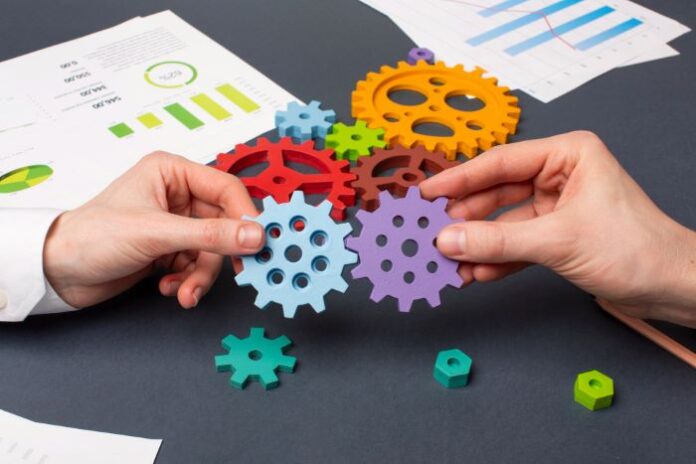Integrating mechanisms are used by a firm to help achieve coordination between subunits. In today’s fast-paced business world, companies are constantly looking for ways to stay ahead of the curve.
One key strategy they use is integrating mechanisms. This is a set of tools designed to bring different parts of a firm together to work as a unified whole.
If you have ever wondered how large organizations manage to keep their teams in sync, make decisions quickly, and adapt to new challenges seamlessly, integrating mechanisms are the secret sauce.
In this article, we will help you see that integrating mechanisms are used by a firm to help achieve a lot. If you have been curious about this subject, this will help shed light on it.
First, What Are Integrating Mechanisms?
Integrating mechanisms are the various processes, structures, and systems that firms use to achieve effective coordination and alignment among their different departments and functions.
These mechanisms range from formal structures like hierarchical reporting lines and standardized procedures to more informal approaches such as cross-functional teams, regular meetings, and internal communication platforms.
Each of these tools serves to bridge gaps between separate units, ensuring that information flows freely and collaborative efforts are made towards the organization’s general objectives.
With these mechanisms, it becomes much easier for companies to enhance their operational efficiency, foster innovation, and maintain a cohesive direction across all levels of the organization.
Integrating Mechanisms Are Used by a Firm to Help ___
Now, let’s get back to the main subject of this post – what firms use integrating mechanisms to achieve. Primarily, integrating mechanisms are used by a firm to help coordinate and align activities across different departments, units, or functions within the organization.
The main reason for using integrating mechanisms is to ensure that the various parts of the organization work together effectively towards common goals and objectives. Now, let’s quickly see why integrating mechanisms are so important.
#1: Enhance Coordination and Cooperation
Different parts of an organization often have specialized roles and may focus on specific tasks or objectives. Integrating mechanisms help ensure that these diverse functions are coordinated, so the organization operates cohesively rather than as isolated units.
This coordination is crucial for the efficient allocation and use of resources, timely decision-making, and the effective execution of strategies.
#2: Facilitate Information Flow
For an organization to function effectively, information must flow smoothly between its parts. Integrating mechanisms, such as cross-functional teams, regular meetings, and integrated IT systems, enable the sharing of information across different areas of the business. This helps in aligning activities, solving problems collaboratively, and making informed decisions.
#3: Support Strategy Implementation
Strategic objectives often require the collaboration of various departments or units within an organization.
Integrating mechanisms are essential for aligning the efforts of these different parts with the overall strategy. They help ensure that all units are working towards the same goals and that their activities are complementary rather than contradictory.
#4: Promote Flexibility and Adaptability
In a rapidly changing business environment, organizations need to be able to respond quickly to new challenges and opportunities.
Integrating mechanisms help by facilitating the re-allocation of resources, the re-orientation of activities, and the swift communication of changes throughout the organization. This adaptability is critical for maintaining competitiveness.
#5: Cultivate a Unified Organizational Culture
Beyond the practical aspects of coordination and information flow, integrating mechanisms are used by a firm to help build a cohesive organizational culture.
They provide opportunities for employees from different parts of the organization to interact, share ideas, and develop a shared understanding of the company’s values and ways of working.
What Are Two Types of Formal Integrating Mechanisms?
Two types of formal integrating mechanisms widely recognized in organizational management are “hierarchical referral” and “direct contact.” Let’s explain what each of them is.
-
Hierarchical Referral
This mechanism involves using the established chain of command within an organization to resolve issues and make decisions.
When different departments or units face a situation that requires coordination or integration, the matter is escalated up the hierarchy until it reaches a level with the authority to provide a resolution.
This ensures decisions are made within a structured framework, maintaining clarity and order in the organization’s functioning.
-
Direct Contact
The second type of formal integrating mechanism is direct contact. This involves facilitating direct communication between managers or employees across different departments or units who need to coordinate their activities.
This can be through regular meetings, joint task forces, or simply encouraging open lines of communication. The aim is to cut through bureaucratic layers, allowing for faster decision-making and problem-solving. It simply brings together the relevant people to discuss and address issues directly.
Final Note
Integrating mechanisms serve important roles in different organizations, especially large ones. They help to streamline processes and enhance collaboration. They primarily help firms to make various parts of the company work together efficiently towards common goals.
If you have read this post to this end, then you should already know that integrating mechanisms are used by a firm to help achieve the most important thing to any company – collaboration!
Related Articles You Might Like:







